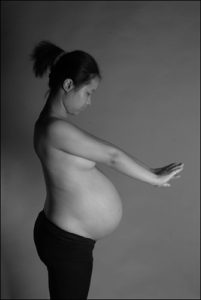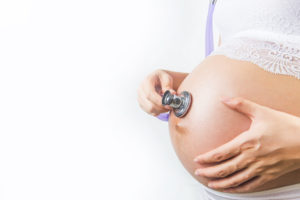The Stress of Giving Birth The Way You Choose In The Face Of The Trend Of Pressured And Forced C-Sections In Hospitals Nationwide
The World Health Organization stated that a rate of cesarean sections in a general population, when greater than 10% are “…not associated with reductions in maternal and newborn mortality rates”. This is so because at a rate higher than 10% among a population, there is no longer an appreciable benefit of a C-Section for mother or baby.
The WHO stated that a C-Section rate of between 10 and 15% is ideal. This suggestion is echoed by the American College of Obstetricians and Gynecologists in their document from 2011. The ACOG discusses the importance of the prevention of primary C-Section (referring to a cesarean performed on a first-time mother who had no complications, where the c-section may not be medically necessary).
According to the CDC, over 31% of births nationwide were C-Sections in 2016. This is a nationwide average among all hospitals and is not divided by state. There are some states where hospitals are more conservative in their use of surgeries and interventions, and there are other states where the average is much higher. When ranked by state, the highest rates of c-sections take place in Nebraska and Louisiana, with New York, New Jersey, Florida, and other states following closely behind with rates over 28%.
As an example of the disparity among individual hospitals within states, a woman living in New Jersey may have her baby at Kimball Medical Center, which has a c-section rate of 23%. If she chooses to go to Jersey City Medical Center or Hackensack Medical Center, she is much more likely to have a c-section, since their rates are above 50%. Though this woman may have had a low risk pregnancy, her choice of hospital may significantly impact the outcome.
One must wonder, with all the official recommendations, why the surgical birth rate is still so very high in some states. Giving birth is a natural process, and with patience, time, and relaxation, happens on its own. If this were not so, there would be no humans on Earth today, since surgical birth is a relatively recent phenomenon. It was not perfected as a surgery where both the mother and child survive, and the woman keeps her childbearing ability, until the late 1800s.
All three of the professional groups cited above, along with most physicians, agree that C-Sections, when medically necessary, can save lives of both mothers and babies. However, a C-Section is not a minor surgery, and it is not without potential complications of its own. One of the most severe is likely to occur in women who wish to have more than one child, after their first child has already been delivered surgically.
The complication I am referring to is called placenta accreta. The incidence of this condition is 1 in 533, which is a large increase from the 1980s, where the rate was 1 in 2,510 pregnancies. It has been conjectured by the ACOG that the increase in the rate of placenta accreta is on par with the increasing rate of cesarean.
This is a condition where the placenta, instead of attaching to the inside of the uterine wall, attaches to the cesarean surgical scar, or goes through the surgical scar to attach to another organ in the body cavity. This results in the need for a hysterectomy, or risk that the mother’s life will be lost to uncontrollable hemorrhage.
The risk of placenta accreta is a risk that increases with each subsequent surgical birth. Since a first C-Section essentially dooms a woman to a second and third, despite recommendations and policies about VBACs (vaginal birth after C-Section), the risk increases even more with every surgery she undergoes. Doctors used to tell a woman who has had three C-Sections that she cannot have any more children, however, this is no longer the case. The risks mentioned above, especially of an emergency hysterectomy, increase exponentially with each additional C-Section.
VBACs are a lower risk procedure than a c-section, however, despite its safety, the small risk that it presents of ruptured uterus is often touted by doctors as a reason to avoid it. Thus, a woman who is not well informed about the possibility of a VBAC will often choose to schedule a c-section instead of taking this risk. While the risk is only 0.2 to 1.5%, some doctors will exaggerate this risk to an almost definite possibility, and encourage a c-section instead.
The new recommendations from the ACOG have stated that there is far lower risk of a VBAC to a woman than of a repeat cesarean. According to their New VBAC Guidelines, “A VBAC avoids major abdominal surgery, lowers a woman’s risk of hemorrhage and infection, and shortens postpartum recovery. It may also help women avoid the possible future risks related to having multiple cesareans, such as hysterectomy, bowel and bladder injury, transfusion, infection, and abnormal placenta conditions (placenta previa and placenta accreta).”
Placenta accreta is not the only complication of a cesarean birth, which is why it is so important for it to be performed only when medically necessary. Surgical birth can cause life-threatening complications, disability, and possibly even death. The increased rate of C-Sections has done nothing to reduce maternal or infant morbidity, so there has been no benefit from these higher rates, according to the WHO.
It is very difficult to ascertain the precise rates of C-Section in the US, since hospitals are not required to report these numbers. As it is not a requirement, most choose not to report. However, Consumer Reports has published a list of hospitals with a scale from lowest to highest rates of C-Sections, organized by state. It only remains on the web as an archive at the WayBack Machine, as it is no longer available on Consumer Reports.
This report was published in 2014, and there has been another similar but less user-friendly list from 2017 that appears on Consumer Reports website, and weighs hospitals on five scales, including infections with C. diff and MRSA, as well as a list of the highest and lowest C-Section rates in hospitals around the country, not organized by state.

Pregnant Woman by NIAID by CC
On a psychological level, it is very dis-empowering to women who want to have a natural birth to be forced into a surgical birth that is not necessary. As the continued popularity of Lamaze classes, Bradley method classes, and other birth education courses can attest, most women desire to have a natural birth. To have that desire squashed for no medically necessary reason is extremely ungrounding.
According to a research survey published in the journal Reproductive Health , only 10% of women who haven’t yet had children want to have a surgical birth in the United States. The other 90% of women wanted to have a natural birth. The 10% of women who wanted to have a C-Section have that desire due to a fear of childbirth, a fear of pain, and fear of physical damage. So out of this 90% of women who want to have a natural childbirth, nearly a third will have that preference ignored, and a surgical birth may be forced on them, in many cases without medical need.
In fact, one woman in New York City was pressured and threatened with having her two children, including the new baby, taken from her if she did not submit to the C-Section that she alleges was not medically necessary. This woman had two prior cesarean deliveries, and wanted to attempt a VBAC. Prior to her due date at the hospital, her doctor may have agreed to let her try for a natural birth. The physician administering her care, however, decided to override her choice, forcing her to undergo a C-Section. The hospital’s lawyer (who was on staff at the hospital and consulted about the matter) agreed, and ostensibly gave the doctor the authority to perform surgery against the woman’s wishes.
It is this woman’s contention, in the lawsuit that has been decided against her, that it should have been her decision if she would have a surgical birth. There was no actual risk to the unborn baby, as she had a healthy pregnancy without complications. However, due to the way the laws are written, her unborn child had more rights than she, and these were rights that the hospital could enforce upon the woman’s body by compelling her to undergo a surgical procedure that she did not want. She was not given a choice, a fair opportunity to allow nature to take its course, as she was pressured by hospital staff using manipulative tactics, into agreeing to the surgical birth from the moment she arrived at the hospital in active labor.
It would be much better to be able to say that this was a completely unique case, and that this doesn’t usually happen. However, if you have ever read the book Pushed: The Painful Truth About Childbirth and Modern Maternity Care by Jennifer Block, her entire text was littered with such stories. There have even been times where women who were in active labor have had their labor halted by medication to force them to undergo a C-Section.
In many cases, the reason why doctors sometimes force women to have a surgical birth (or any other birth-related procedure, such as episiotomy) is liability. Only when a surgical birth is performed can the doctors, in their experience, protect themselves completely from a malpractice lawsuit. In general, unless the physicians made serious errors with the surgery itself, such as negligence causing disability or death, a court case fares better for the hospital when a surgical birth was performed.

Pregnant Woman by CC
Of course, there may be a monetary motivation as well. Whereas a natural birth costs a woman’s health insurance plan $10,000, a surgical birth costs her health plan $30,000-$50,000 in metropolitan areas such as New York City and Northern New Jersey. Clearly, it is in a for-profit hospital’s best interest to increase revenue, and performing as many surgical births as possible may be a way some hospitals help to accomplish this goal. In fact, according to physicians quoted in Epiduralized Birth and Nurse-Midwifery: Childbirth in the United States: a medical ethnography by Maureen May, births as a rule are the ‘bread and butter’ of most hospitals. The more births they have in a hospital, the greater their revenues and profits. Since hospitals are, in general, not charities, making the most money possible is usually the goal.
There is also the incidence of prolonged labor. Many first-time moms will labor for 20-40 hours, and this is quite normal. In some hospitals, there is an arbitrarily determined time limit for how long a labor can progress before a surgery is ordered. Since every pregnant woman is different, there should be no such time limit, and a maternity ward should not be a birthing assembly line, with the main goal of filling and then quickly emptying beds so that the most births may be facilitated in the least amount of time.
It would seem, however, that doctors may be starting to get the message disseminated by these official organizations, according to new statistics released by the CDC. The overall cesarean rate nationwide has dropped by about a percentage point over the last two years. However, this is an extremely small decrease, and may be related purely to chance rather than changes in procedure or attitude.
For pregnant women who are wondering how they can prevent a surgical birth, there are several things that they can do. The first is to have prenatal massage therapy. Multiple studies have found that having massage therapy sessions, once per week during pregnancy leading up to the birth, reduces the overall rate of interventions. Interventions were not classed into surgery, episiotomy, or forceps assistance, but these are all examples of interventions.
In addition, prenatal massage has been shown in studies to increase birth weight and reduce prematurity, therefore increasing the likelihood that a woman will carry her baby to term.
The second, perhaps most important, preventative measure a woman can take is to have her birth at a birth center led by a midwife. According to recent research conducted by the Midwives Alliance of North America, home births are just as safe as those in a hospital, but many first-time moms would rather give birth in a medical-type setting, such as a free-standing birth center. Since birth centers are required by law to be within five minutes of a hospital with a NICU, there is no risk that if a medical intervention were required, it would not be received.

Nikki White, by CC
If a woman absolutely must have a birth in a hospital, and a birth center is not an option, then the next best preventive measure against losing her right to choose how her baby is delivered, is having a birth doula. A birth doula is the woman’s advocate in the hospital, explaining what procedures are being contemplated by the doctors, what the risks and benefits are of the various choices, and allowing the woman to give fully informed consent.
Doulas are trained to work with all types of doctors in various hospital settings, and they are there to advocate for the rights of the woman. According to Mothering the Mother by Klaus and Kennell, the rate of C-Sections among women who had doulas with them in the hospital was less than women without doulas. While the presence of a doula may not prevent a C-Section, even an unnecessary one, a woman is likely to have a much more empowering experience. She will be able to speak her desires, and have someone there who respects her wishes, first and foremost, keeping the pregnant woman’s right to informed consent the highest goal.
There is something depersonalizing about placing your life into the hands of someone who is extremely busy and to whom you are not important. This is not to say that all doctors and nurses on a maternity ward are like this, but there are enough birth stories online to attest to the sad fact that such is not uncommon within the world of hospital maternity care.
The third method of prevention that every pregnant woman should practice is daily exercise. This has been shown in recent studies to help prevent gestational diabetes and hypertensive disorders. Researchers also found that aerobic exercise increased the rate of natural birth over c-section, when compared to a control group who did not exercise. Prenatal yoga has also shown similar results in studies, so every pregnant woman should exercise every day, whether with aerobics or yoga, to help her have a better birth outcome.
In these rushed and harried modern times, it is important that pregnant women seek awareness of the benefits and risks of every medical procedure. If a woman has had a healthy pregnancy, free of complications, she should be allowed the time to give birth naturally, even if it takes a whole day.
*FDA Disclaimer: None of the content of this article shall be construed as a replacement for the medical advice of your physician. Everyone’s situation is different, and you should consult your doctor for questions about your particular pregnancy and birth.





